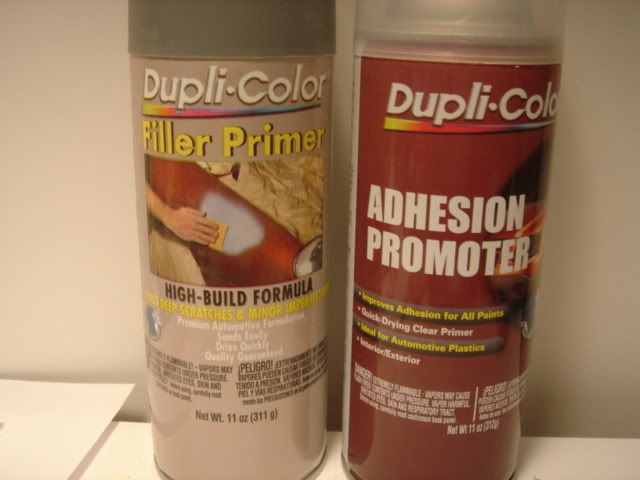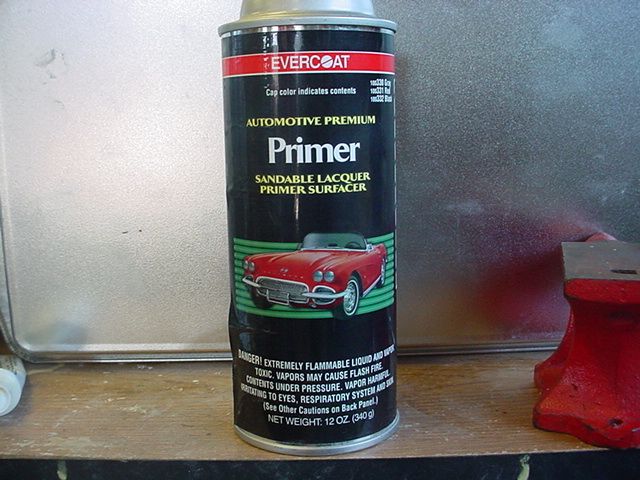|
|
Post by allstarhr on Feb 23, 2009 17:34:11 GMT -7
Nah, makes you do things that look like chocolate.  |
|
Dusted
Pro Stock
   Big Boyz Toyz
Big Boyz Toyz
Posts: 413
|
Post by Dusted on Feb 23, 2009 17:56:19 GMT -7
Oh about the paint i bought some touch up cans of Dupli-Color and sandable primer. they are 5oz I think for about $5.50
|
|
Deleted
Deleted Member
Posts: 0
|
Post by Deleted on Feb 26, 2009 7:46:50 GMT -7
thanks for the help to strip the paint i used oven cleaner ( easy off )and sealed the body in a small box
for about 18 hrs and most of the paint was peeled off
we have try Dupli-Color paint on 1/24 model cars work very well
is winter ever going to end LOL !!!!!!!!!!!!!!!!!!!!!!!!
|
|
Dusted
Pro Stock
   Big Boyz Toyz
Big Boyz Toyz
Posts: 413
|
Post by Dusted on Feb 26, 2009 8:38:49 GMT -7
The Dupli-color is actually cheaper than parma, testers etc because those cans are 3oz for a buck less than the 5oz for Dupli-color and it seems to me Dupli-color is better paint and spray tips
Well at least it finally stoped snowing here, it snows just about everyday in Jan & Feb I am ready for spring myself. LOL
|
|
|
|
Post by nosubfor3 on Jun 30, 2012 4:26:25 GMT -7
Hey Ron Bondo. Will the Duplicolor Automotive paint stick to an enamal primer? I got some acrylic laquer that dosen't seem to want to stick on any thing. Never had this problem.
|
|
|
|
Post by hilltopspeedway on Jun 30, 2012 7:57:28 GMT -7
I learned from the master, SKR...use Tamiya tape, well worth it!!! For primer try the Duplicolor High Build, quick and fast, can block and wet sand the same day, usually about an hour later or sooner, the can on the left... Enamel takes too long to dry, IMO...I've used the Adhesion Promotor, not really necessary if you have scuffed your body before priming.... Try some Soft Scrub bathroom cleaner and a stiff toothbrush, has a fine grit for etching your body... These are only suggestions as results may vary, lol. RM  |
|
|
|
Post by bondoman2k on Jul 1, 2012 14:34:52 GMT -7
Nosub...here's a good rule of thumb when painting. You can use enamel over anything, or lacquer under anything. But most of the time, do not use lacquer over enamel. I say most of the time because I have had a very rare instance where I managed to use a 'modified' enamel over lacquer. Usually what happens if you use enamel underneath is 'lifting' or 'crazing'. This is because enamel actually dries from the outside in. It flashes off faster so it traps solvents underneath, and takes more time to 'gas out' (Solvents need to evaporate completely to be dry) whereas lacquer dries from the inside out, and as a result dries much faster, but with less gloss. And, by drying from the inside out, the solvents evaporate very fast, usually by the time you're actually done painting. Now, this will change depending on humidity too, in high humidity situations, lacquer will actually turn 'white'! Sometimes enamel will do this too. A good cure for this is to have a heat gun or hair dryer on standby. Heat the body after you put on a coat, but not so much you cause it to bubble up (or warp the body!). In general, humidity actually will slow down dry times of any type of paint. If you're airbrushing, this is much more controllable. But if your using spray bombs. you really are at a disadvantage before you even start. Altho, cleaning an airbrush IS a messy job, and the spray can cleanup is..well...non existent! LOL!! ;D Also. ALL paints, lacquer or enamel, DO have a 'shelf life'. Not too sure how to read the codes since every mfr uses a different system of coding. Enamels won't work well for long once you actually spray something with them. As you spray, you lose the propellants from the can, which act as a 'preservative' much like packaged food. Once air hits it, the cycle starts.  If your using Duplicolor lacquer, try to use either a lacquer based primer under it, or at least stay with some type of Duplicolor primer. Their products are all designed to work together, even the enamel primers (these are what I reffered to as 'modified' enamels). If you do it this way, just be sure to let the primer dry longer before topcoating. If it doesn't say lacquer on the can, it's either a modified enamel or a straight enamel in most cases. Duplicolor topcoats are always lacquers, unless the can says otherwise.  And stay AWAY from the "99 cent special" primers at WallyWorld or somewhere else! These cause a LOT more problems than they're worth!  Did this help or just confuse you more? LOL! Let me know if you need more explanation or clarification. Like Hilltop says..whenever possible, just stick with a plan someone else has already developed! ;D And btw..the primer Hilltop posted is the exact same primer I use under EVERY kind of paint. Never had any probs.  Ron (Bondo)  |
|
|
|
Post by nosubfor3 on Jul 1, 2012 15:18:42 GMT -7
Ron and Hilltop thanks for the info. I always knew staying with the same type paint was the best way. I never heard of acrylic lacquer. You can use enamel over anything, or lacquer under anything makes perfect sense now that I know the drying properties.I think I'll be gettin me some Duplicolor primer next time out at the parts store.This will save me a lot of pain in the future.
|
|
|
|
Post by bondoman2k on Jul 1, 2012 19:43:58 GMT -7
Glad I could help.  Actually, you don't hear a lot of people using the term acrylic before the lacquer anymore. There are a LOT of different types of paint, even going back to the early days of autos. Used to use nitrocellulose lacquer on the Model T's. Talk about SLOOOOW drying! LOL!! That's why it could be brushed on (and it WAS) and the brush strokes would flow out. Usually took close to 3 or 4 days to dry!  Then came acrylic lacquer (pioneered by Jon Kosmoski of House of Kolor in 1958..company has been sold several times since then), and alkyd enamel (again, the alkyd was SLOOOOW drying, but not as slow as nitrocellulose, and smoothed out better than the early lacquers and was more forgiving to mistakes), then came acrylic enamel, then urethane enamel, which was a much faster drying paint and smoothed out wayyyy better. Then they went to a basecoat/clearcoat urethane system (early systems used a lacquer basecoat under a urethane clear, but the basecoat was later reformulated to bond better with the clearcoats), and the 'hot' setup now is waterborne paint. I know..ya didn't ask for that much info...lol. But it might help you some in determining what paint to use in the future.  Ron (Bondo)  |
|
|
|
Post by hairycanary on Jul 1, 2012 21:17:51 GMT -7
Ron nice job on the history of the different paints. Never new there were so many. I though I would throw in my favorite. I like to use a Laquer primer (evercoat pictured) that is thin. It drys quick and doesn't cover up the detail so bad. I can prime and sand in 5 minutes even wet sand. When I am doing a master I use a lot of bondo (evercoat also) that dries fast then I sand prime sand and back to the bondo until I get it to where I want it. I have also used Laquer thinner to thin enamels. Helps then dry quicker. If I can't get the laquer to work with the enamel I try to use a hot reducer. Hate waiting for paint to dry. Rick  |
|